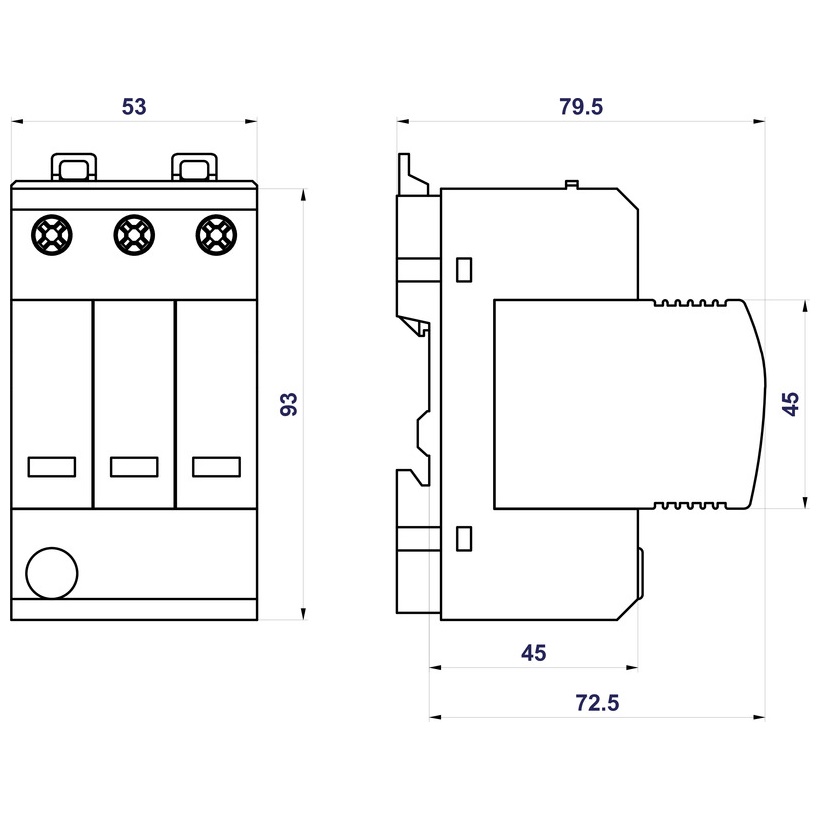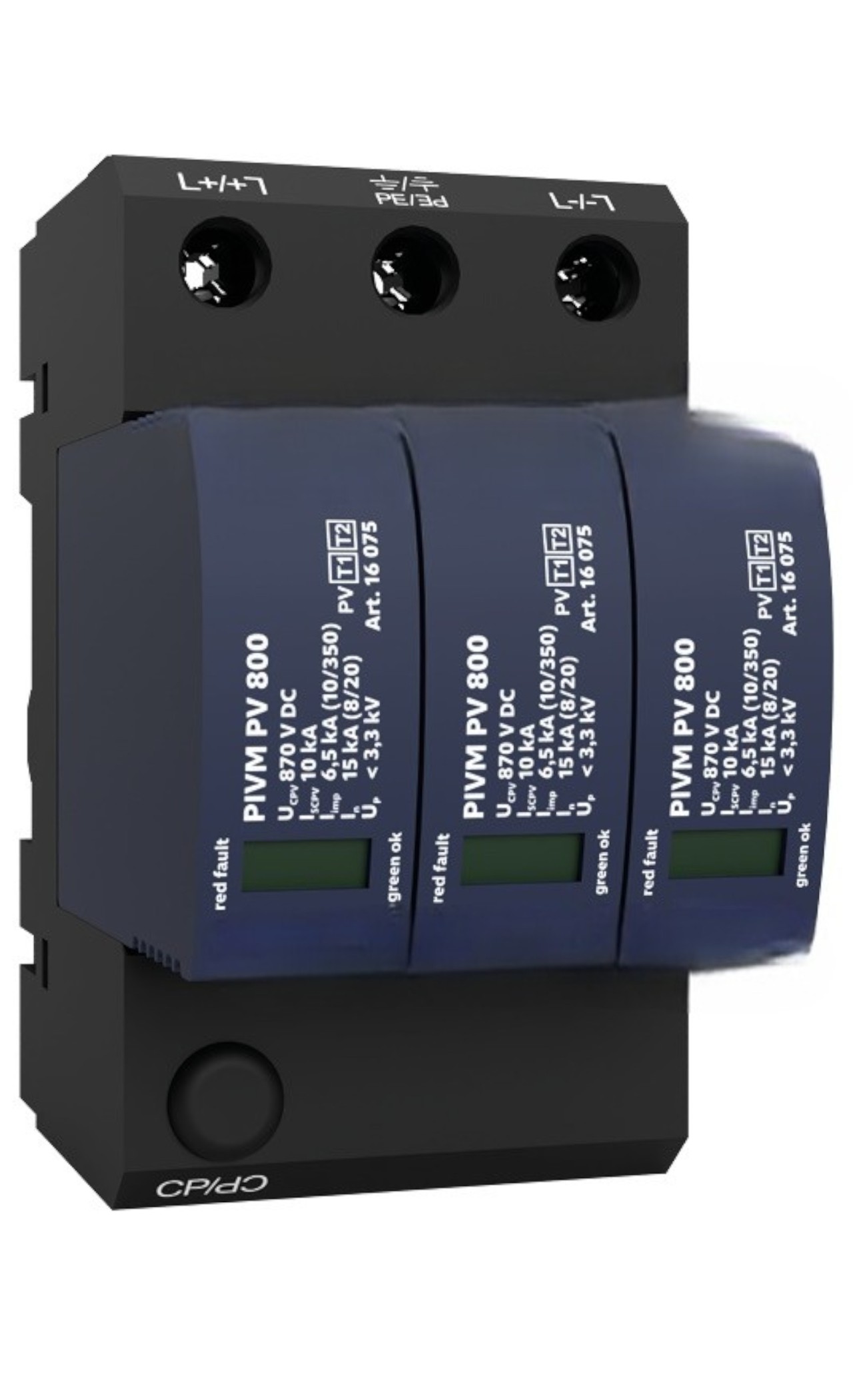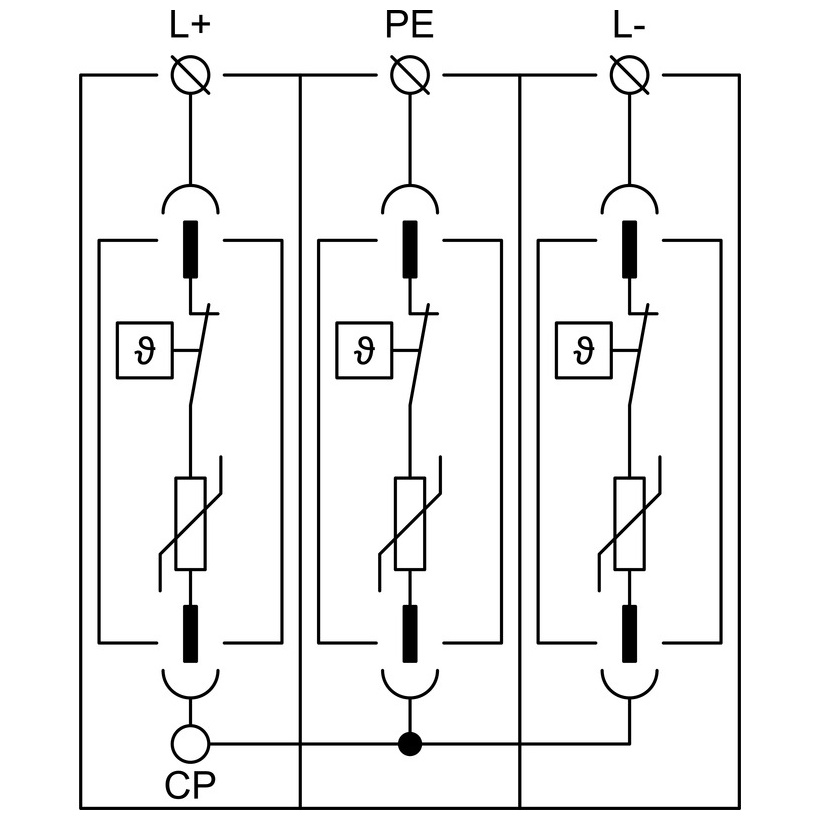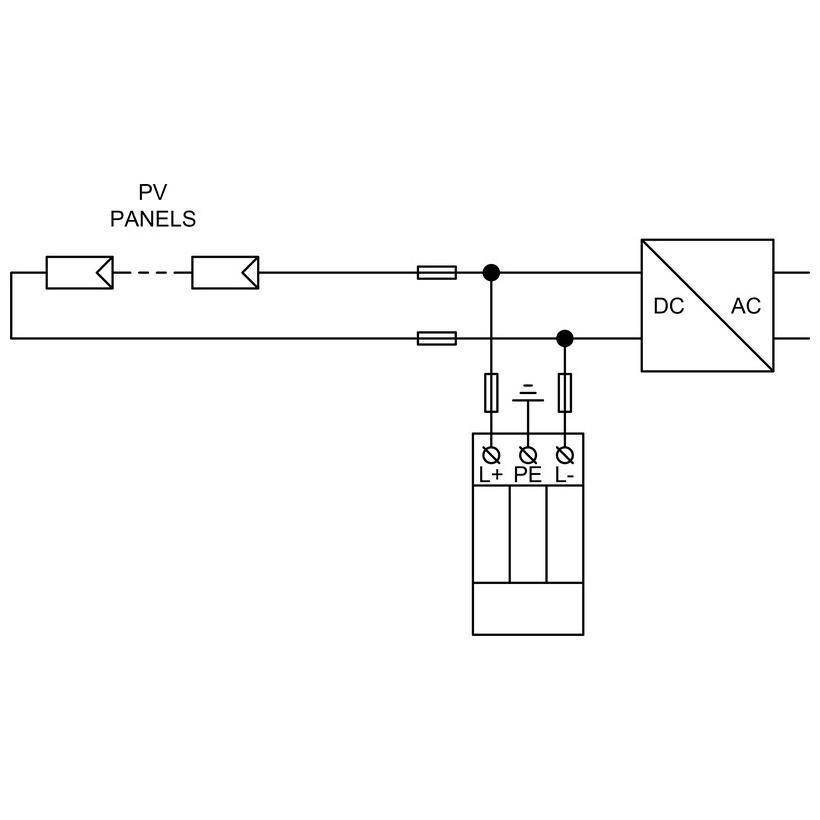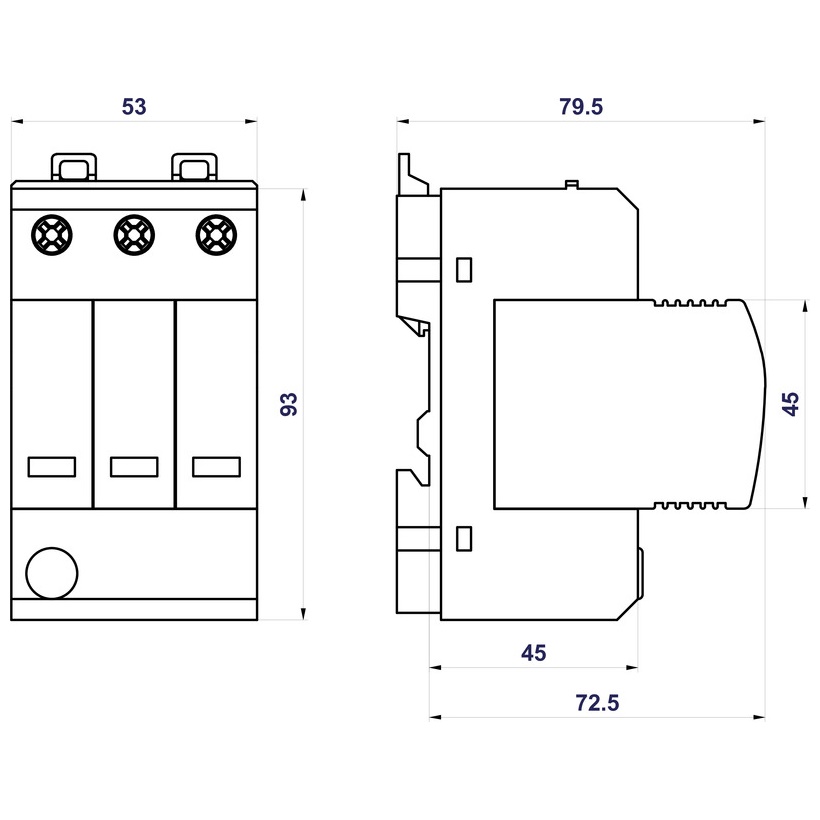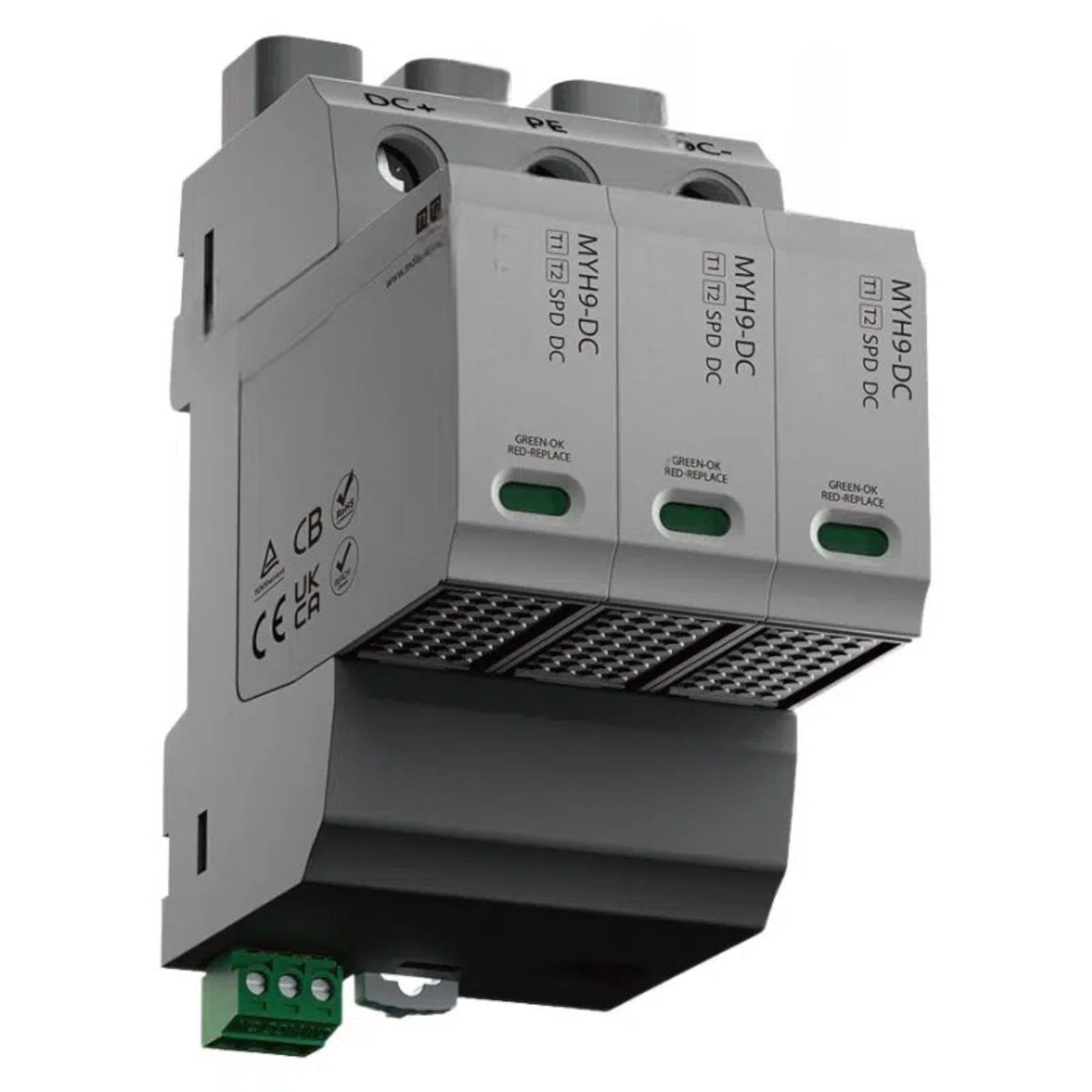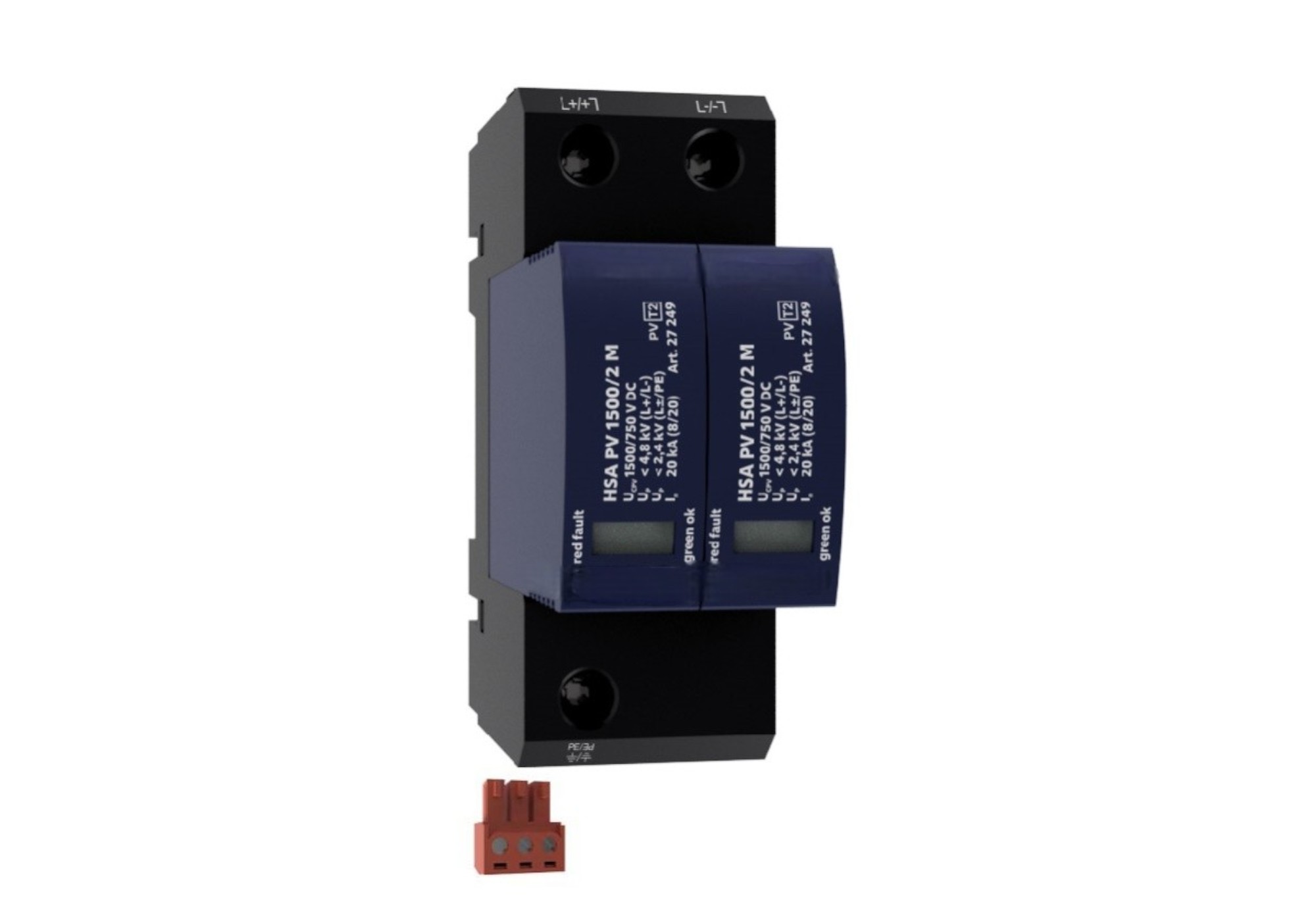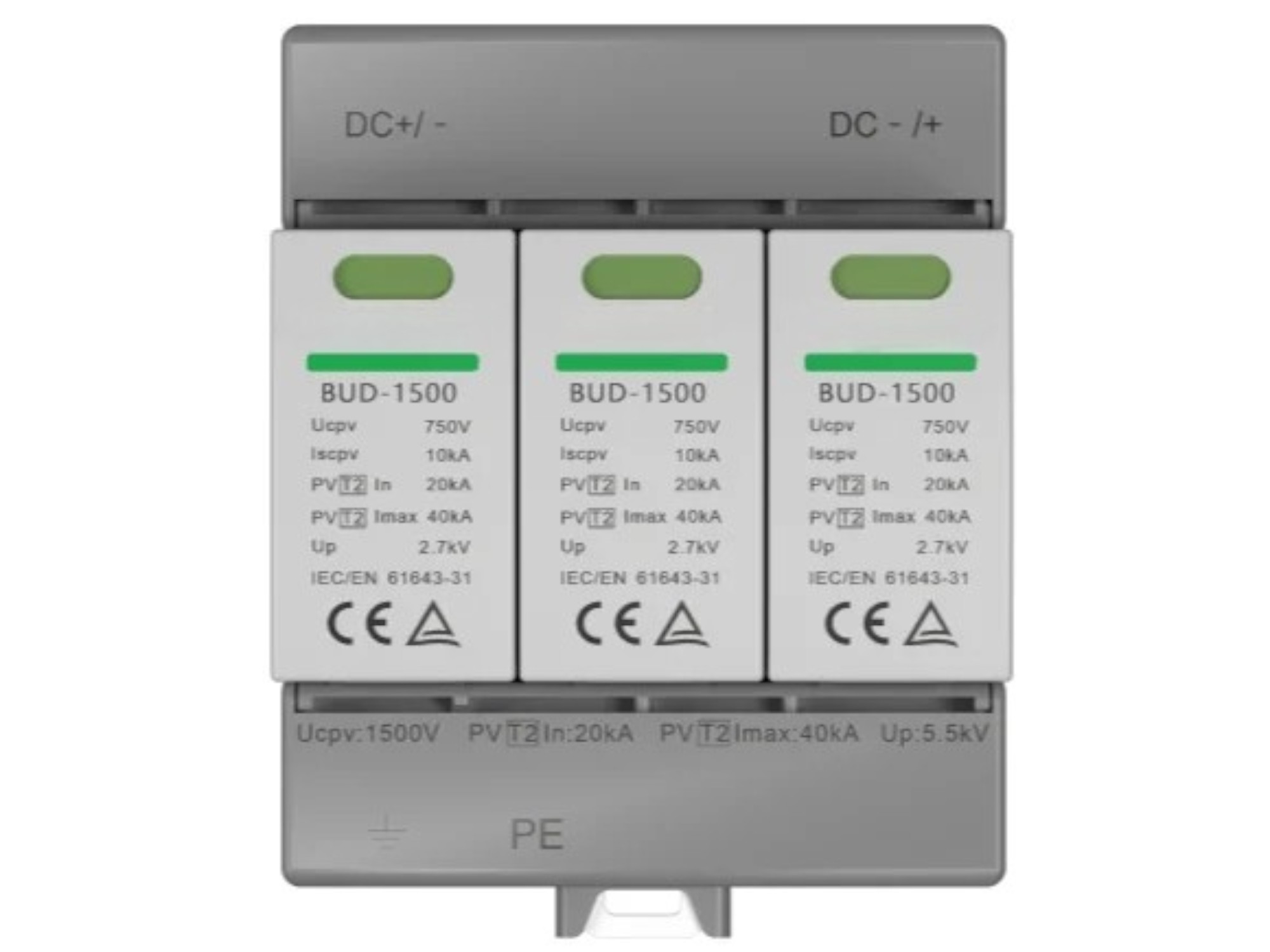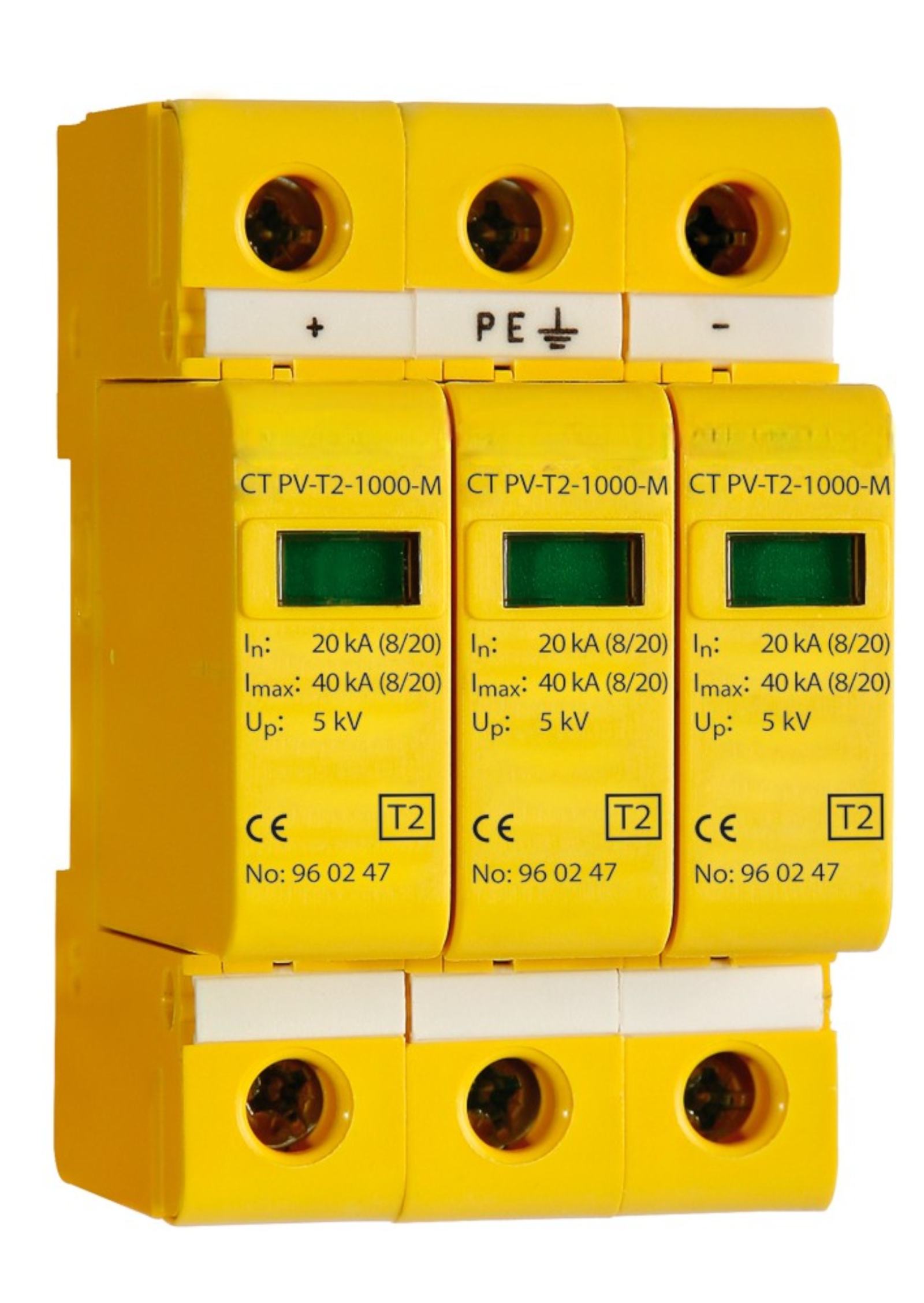Type 1+2 PV SPD | Y-Connection | No Back-Up Fuse | LPL III–IV
Send Inquiry
Direct-strike capable protection for PV arrays—when space and distance are limited.
These lightning impulse current and surge arresters (Type 1+2) are purpose-built for the DC side of photovoltaic systems that use an external Lightning Protection System (LPS) but cannot maintain the required separation distance “s.” The devices combine Type 1 capability for lightning impulse currents with Type 2 surge suppression to protect inverters, strings, and DC busbars.
Y-connection for robust, fault-tolerant operation.
A Y-type connection makes the working conductors more resistant to earth faults, helping stabilize the PV DC network in demanding grounding conditions and mixed-potential environments.
Integral safety—no back-up fuse required.
Each varistor sector between L+, L–, and PE is equipped with an internal thermal disconnector. On varistor end-of-life (overheating), the disconnector trips to interrupt DC current and provide clear fault indication. The special disconnector construction enables installation without a separate back-up fuse, simplifying coordination and saving space.
Comprehensive PV system protection.
By ensuring equipotential bonding of positive and negative busbars, these arresters reduce damaging transient overvoltages from atmospheric discharges—including direct lightning strikes to the PV system—as well as switching events. They are suitable for Lightning Protection Levels LPL III and IV, covering the majority of rooftop and C&I deployments.
Service and monitoring options.
M indication: Removable (plug-in) module design for quick replacement and minimized downtime.
DS indication: Remote monitoring contact for status signaling to PLC/SCADA/alarm relays.
Typical applications
PV combiner/re-combiner boxes and inverter DC inputs where separation distance “s” is not achievable
Rooftop and commercial/industrial plants equipped with external LPS
Retrofit projects seeking coordinated Type 1+2 protection without adding back-up fuses
Key features at a glance
Type 1+2 PV surge arrester (lightning impulse + surge suppression)
Y-connection—resistant to earth faults of working conductors
Internal thermal disconnectors on L+, L–, PE; DC current interruption on fault
No back-up fuse required thanks to special disconnector construction
For PV DC side with external LPS when separation distance “s” is not observed
Suitable for LPL III–IV
Options: M = removable module, DS = remote monitoring
